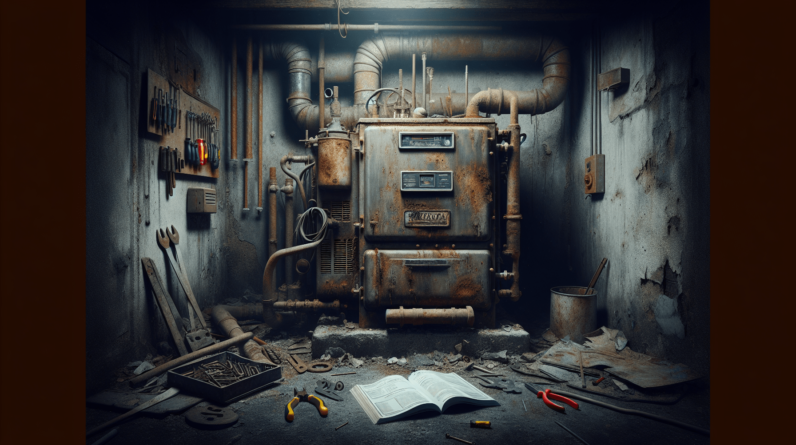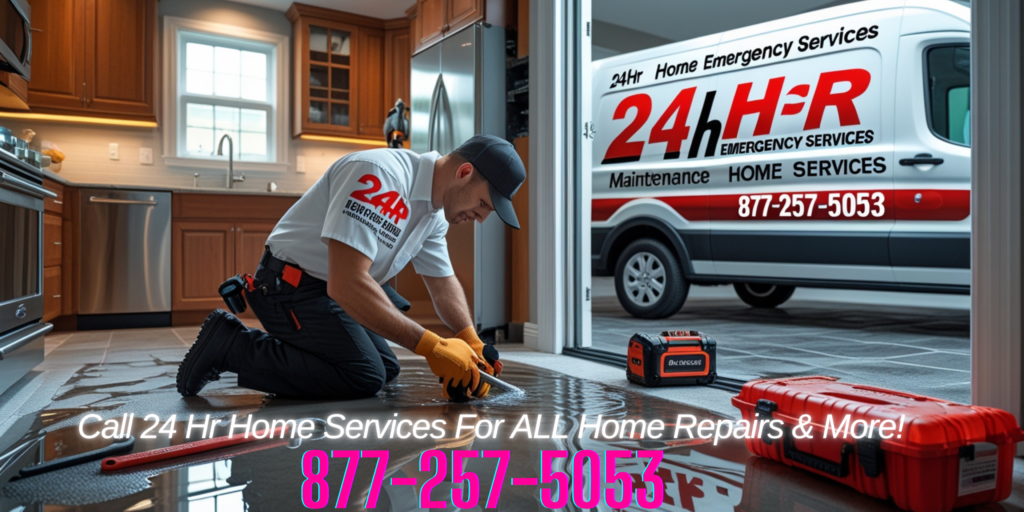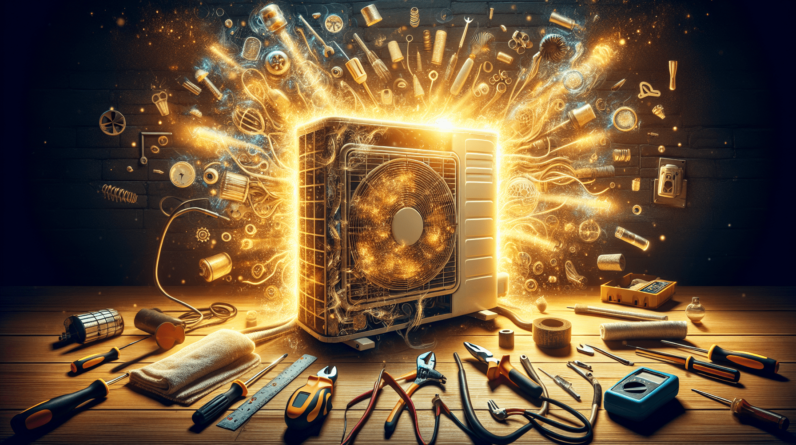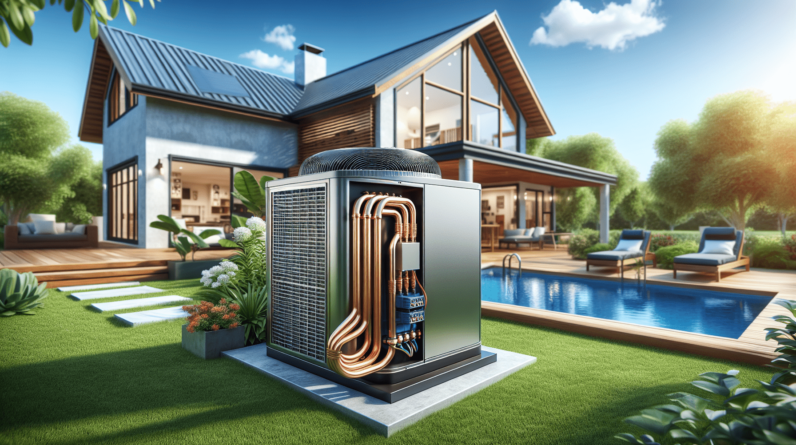

Have you ever found yourself shivering in your own home because your furnace decided to take an unexpected break? It’s a frustrating situation, especially during chilly months when you rely on heating to stay comfortable. Understanding furnace repair is essential for any homeowner. Whether you’re facing a minor hiccup or a major breakdown, knowing what to do can save you time, money, and a lot of discomfort.
Understanding Your Furnace
Before jumping into repairs, it’s helpful to understand how your furnace works. At its core, a furnace heats air that is distributed throughout your home through ducts. Various types of furnaces include gas, electric, and oil furnaces. Knowing the type of furnace you have is the first step in understanding how to maintain and repair it effectively.
Types of Furnaces
| Type | Description | Pros | Cons |
|---|---|---|---|
| Gas Furnace | Uses natural gas or propane to heat air. | Efficient and cost-effective. | Requires a gas line; risk of leaks. |
| Electric Furnace | Heats air using electric coils. | Easier to install; no venting needed. | Higher operating costs, less efficient. |
| Oil Furnace | Burns heating oil to create warm air. | Good for colder climates; heat remains longer. | Requires oil delivery; more maintenance. |
Understanding these types can guide you in recognizing common problems associated with each.
Common Furnace Problems
Furnaces can develop issues for various reasons. Being aware of these can prepare you for the unexpected and help you troubleshoot effectively.
No Heat
One of the most alarming situations is when your furnace simply won’t produce heat. This can be due to a defective thermostat, pilot light issues, or clogged filters. Regular maintenance can prevent most of these problems, but if they occur, understanding the root cause is essential.
Uneven Heating
Have you noticed that some rooms in your home are warmer than others? This could result from blocked ducts, improperly sized systems, or even a dirty filter impeding airflow. Ensuring that all vents are unobstructed is key to achieving consistent heating throughout your home.
Strange Noises
Furnaces aren’t supposed to announce their presence loudly. If you hear banging, rattling, or whining sounds, it’s a sign something’s off. While some noises might be normal, like gentle humming, any unusual sounds deserve your attention. They can indicate loose parts, dirty burners, or a malfunctioning motor.

Preventive Maintenance
Prevention is always better than cure. By taking proactive steps, you can minimize the risk of breakdowns and expensive repairs, and enhance the efficiency of your furnace.
Regular Filter Changes
One of the easiest ways to maintain your furnace is by changing or cleaning the filters regularly. A dirty filter restricts airflow and can lead to overheating, resulting in potential damage. To keep your furnace running smoothly, check the filter monthly and replace or clean it as needed.
Scheduled Inspections
Many homeowners overlook the importance of annual inspections. A professional technician can provide a thorough examination of your furnace, identifying any issues before they turn into a costly repair. These inspections also ensure that your system is running efficiently, which can lower your energy bills.
Keep Ducts Clean
Dirty ducts can accumulate dust, allergens, and debris that hinder airflow. Having your ducts cleaned every few years not only contributes to better furnace performance but also improves indoor air quality. Don’t hesitate to hire professionals for this task, as they have specialized tools and expertise.
DIY Troubleshooting Tips
Sometimes, simple issues do not require a professional. Here are some troubleshooting steps you can take yourself!
Check the Thermostat
The thermostat controls your furnace’s operation. If your furnace isn’t producing heat, ensure the thermostat is set to “heat” and the desired temperature is higher than the room’s current temperature. You might also want to check the batteries if you have a battery-operated model.
Inspect the Pilot Light
If you have a gas furnace, the pilot light is crucial for heating. If it’s out, follow the manufacturer’s instructions to safely relight it. If it frequently goes out, there may be a more significant issue, such as a thermocouple malfunction.
Examine the Circuit Breaker
Sometimes, the simplest solutions can cause the biggest headaches. If your furnace won’t turn on, check the circuit breaker. It may have tripped and needs resetting. If this happens frequently, it’s worth consulting a professional.

Knowing When to Call a Professional
While some issues can be managed on your own, others signal that it’s time to bring in the pros. Recognizing when to engage a professional can save you from larger problems down the road.
Frequent Repairs
If you find yourself consistently repairing your furnace, it may be time to consider replacement. Frequently investing time and money into fixing an older model often isn’t worth it.

Water Leaks
If you notice water pooling around your furnace, it indicates a significant problem that requires immediate attention. Water damage can lead to structural issues, so it’s essential to call a technician right away.
Yellow Flame
For gas furnaces, the pilot light should burn blue. If you see a yellow flame, it could suggest improper combustion, which can lead to increased carbon monoxide levels. This is a serious safety concern and should be addressed immediately by a professional.
Cost of Repairs
Understanding the potential costs associated with furnace repairs can help in budgeting and decision-making. Remember that while some repairs might seem inexpensive, others can be quite costly.
Factors Affecting Repair Costs
- Type of Repair: Minor repairs, like thermostat replacement, are relatively inexpensive. Major repairs, such as replacing a heat exchanger, can run into the thousands.
- Age of Furnace: Older furnaces often require more repairs. Sometimes, investing in a new furnace is more cost-effective than constantly fixing an old one.
- Location: Labor costs can vary based on where you live. Urban areas may have higher rates compared to rural settings.
Average Repair Costs
| Repair Type | Average Cost Range |
|---|---|
| Thermostat Replacement | $100 – $300 |
| Ignitor Replacement | $100 – $250 |
| Compressor Replacement | $1,000 – $2,500 |
| Full System Replacement | $3,000 – $7,500 |
These costs are rough estimates and can vary depending on various factors, including your location and the specific circumstances.
Choosing the Right Technician
When it’s necessary to call a professional, it’s essential to choose the right technician. Here are some tips to ensure you make a good choice.
Look for Certifications
A qualified technician should have the necessary certifications. Look for credentials from recognized organizations, which ensure the technician has undergone proper training.
Ask for Referrals
Word of mouth is often one of the best ways to find reliable service. Ask friends, family, or neighbors for recommendations. Online reviews can also provide valuable insights into a company’s reputation.
Get Multiple Quotes
Before settling on a repair service, obtain quotes from several technicians. Compare their prices, but also consider their reputation and reviews. The cheapest option may not always be the best.
Furnace Replacement
Sometimes, repairs aren’t enough, and replacing your furnace is the best option. This can be a daunting decision, but it’s an important one.
Signs You Need a New Furnace
- Frequent Breakdowns: If your furnace is constantly breaking down or requires costly repairs, replacement may be more economical.
- Increased Energy Bills: An inefficient furnace can drive up your energy costs. If you notice a significant rise in bills without a change in usage, it’s a warning sign.
- Age of Furnace: The average lifespan of a furnace is around 15 to 20 years. If your unit is approaching this age and showing signs of decline, consider replacing it.
Selecting the Right Model
Choosing the right furnace model can be overwhelming. Here are key factors to keep in mind:
- Efficiency: Look for models with a high AFUE rating (Annual Fuel Utilization Efficiency), which indicates better fuel efficiency.
- Size: An adequately sized furnace is crucial for effective heating. Too small won’t heat effectively, while too large will cycle on and off frequently, wasting energy.
- Brand Reputation: Research brands and their reliability. Read reviews and check for warranty options.
Conclusion
Caring for your furnace is not just about fixing problems when they arise; it’s about understanding how to maintain it proactively. With the right information and precautions, you’ll not only keep your home warm during the winter months but also save time and money in the long run.
Knowledge is power, and knowing how to recognize issues, troubleshoot common problems, and when to call in the experts can help you keep your furnace running smoothly for years to come. Always remember that a well-maintained furnace is key to a comfortable home, especially when the temperatures start to drop. So, take charge of your heating system and keep the chill at bay!
“Need reliable home services or remodeling? Whether it’s an emergency or a routine project, we’ve got you covered 24/7! Call us anytime at 877-257-5053 and let our experts handle the rest!”






